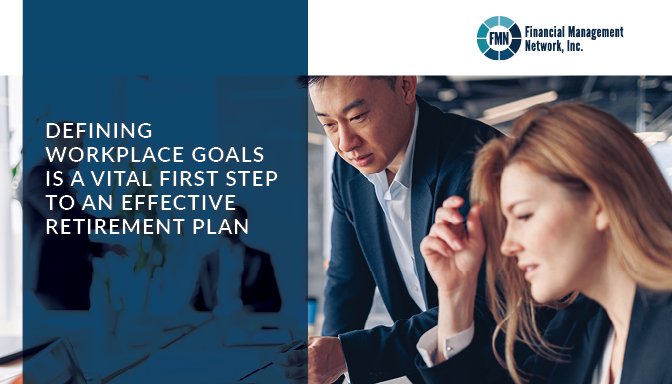Required for 2024
Luckily, the required changes for 2024 are minimal.
Requirement Summary
Long-term, part-time employees become eligible to participate in the 401(k) plan.
Catch-up contributions are required to be Roth if the participant earns more than $145,000 in W- 2 compensation.
Long-term, Part-time Employees
As part of SECURE 1.0, there is an important provision about long-term, part-time employees regarding retirement plan eligibility. In short, effective January 1, 2024, 401(k) plans must allow employees who have worked 500 hours or more in the past three consecutive 12-month periods to contribute elective deferrals to the plan.
Changes for High Earning Pre-Retirees
Employees looking to maximize their retirement savings with catch-up contributions should be aware that if they earn more than $145,000 in W-2 wages, their contributions are now required to be Roth. If the employee earns less than $145,000, they can choose either pre-tax or Roth contribution type. Note that plans need to allow for Roth contributions for this option to be available.
**These required provisions may need additional explanation. Contact us to discuss your specific plan.**
Optional for 2024
While this is not a complete list of the optional provisions to consider in 2024, this short list includes several of the most anticipated. We want to focus on the provisions that may reduce your administrative hassle, provide employees relief during compromising situations and could encourage positive savings behaviors.
Reduce Administrative Hassle
Account Transfers for Former Employees
Retaining 401(k) accounts of former employees can be onerous for plan sponsors, particularly if the accounts are small and inactive. However, there is a new solution available that helps facilitate the transfer of accounts to the ex-employees' new employers.
Automatic portability is a transaction process that allows 401(k) accounts with balances between
$1,000 and $7,000 to be transferred to the new employer's retirement plan automatically, without involving the former employee. This can save plan sponsors time and resources, while also ensuring that former employees' retirement savings remain safe and intact.
Fortunately, many recordkeepers and service providers can help facilitate smooth 401(k) account transfers. From locating missing plan participants to handling necessary paperwork, the right partner may help reduce costs, improve efficiency and enhance employee satisfaction.
Safe Harbor IRA Upgraded
Previously, plan sponsors could only transfer former employees' 401(k) accounts to a Safe Harbor IRA if the balance was not more than $5,000. The revised provision increased that amount to
$7,000. This may help improve plan administration by helping sponsors avoid large plan audits, additional fees and issues caused by missing participants.
Provide Employees Support
Help Workers Access $1,000 for Emergencies
SECURE Act 2.0 offers a simple solution for employees who need to access retirement savings for personal or family emergencies. This provision allows workers to withdraw up to $1,000 from their retirement savings without incurring the typical 10% excise tax penalty.
Even better, the withdrawal is not a loan and requires little additional paperwork or administrative burden. Employees can take advantage of this one-time distribution and optionally repay it within three years. This feature could prove particularly useful for busy HR professionals and 401(k) administrators, looking to streamline processes and save time.
Payroll Deducted Emergency Savings
This "side-car" emergency account can provide employees with further security and peace of mind in the face of financial uncertainty.
Under this provision, employers can automatically enroll their employees in a savings account that allows up to 3% of their wages to be saved for emergencies. Account contributions are made on a Roth-like basis and are capped at $2,500. Once the cap is reached, additional contributions can be directed into a Roth-defined contribution plan or stopped altogether. The accounts are also subject to annual matching contributions. Additionally, the first four withdrawals from the account each year are not subject to any fees or charges. These emergency savings accounts are for non- highly compensated employees.
This new feature helps employers support their workers' financial well-being and to become more confident and secure in their financial lives.
Penalty-Free Withdrawals Available for Victims of Domestic Abuse
Domestic abuse survivors can withdraw up to $10,000 (or 50% of their retirement fund, whichever is lesser) without penalty. This initiative provides much needed financial security for survivors.
Natural Disasters and Financial Response
In the unfortunate event of a natural disaster, this new measure provides relief for those dealing with it. Individuals can withdraw up to $22,000 from their retirement plan or IRAs without facing the 10% early withdrawal tax penalty. This amount can be paid back over three years or the recipient can pay taxes on the distribution, if not repaid, spread out over three tax years.
Encourage Positive Savings Behaviors
Auto-Features and Honest Mistakes Are Now Protected
Auto-features have been proven over and over to help all workers save for retirement. In that spirit, this provision provides a grace period for correcting certain retirement plan errors. Plan sponsors now have 9 ½ months after the close of each plan year to rectify mistakes related to default enrollment or matching contributions without facing any penalty.
This is beneficial for HR executives, who often have to deal with a large number of employees and may occasionally make innocent mistakes. The extension offers them peace of mind from potential fines and allows them to focus on more important tasks rather than worrying about errors made when administrating their retirement plans.
Next Steps
As a 401(k) manager or employer, you have the opportunity to take advantage of the SECURE Act 2.0 provisions to reduce administrative hassle, encourage positive savings behaviors and enhance financial confidence for your employees. Reach out to us today to learn more about how the new legislation can benefit your plan. Don't miss out on this chance to make a real impact on your employees' future!
CURTIS S. FARRELL, CFP®, AIF®
949.455.0300 x222
cfarrell@fmncc.com
ARAN SAHAGUN, CRPS®
949.455.0300 x210
asahagun@fmncc.com
Investment advisory services are offered by Financial Management Network, Inc. (“FMN”) and securities offered through FMN Capital Corporation, (“FMNCC”), member FINRA & SIPC.
This information was developed as a general guide to educate plan sponsors and is not intended as authoritative guidance or tax/legal advice. Each plan has unique requirements, and you should consult your attorney or tax advisor for guidance on your specific situation.
©401(k) Marketing, LLC. All rights reserved. Proprietary and confidential. Do not copy or distribute outside original intent.

























